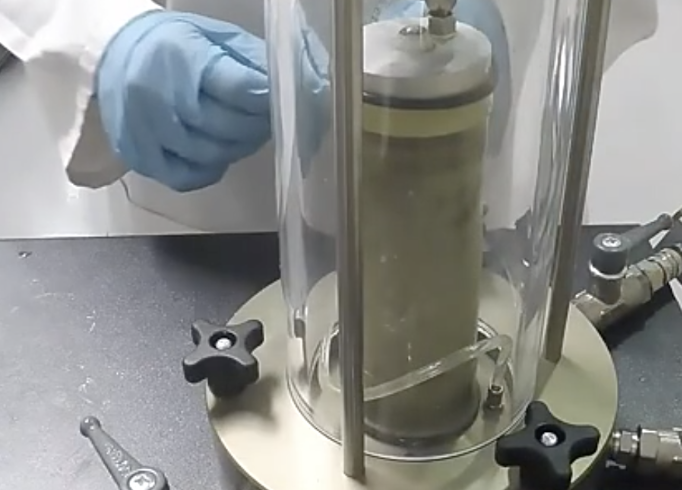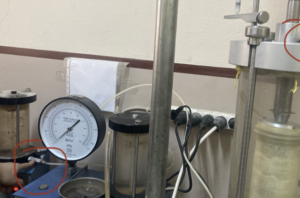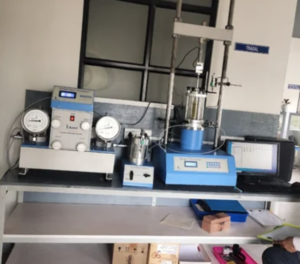What to Consider When Purchasing a Triaxial Sample Compactor for Your Lab
A triaxial test is only as good as the specimen you compact. The right compactor will deliver uniform density and moisture with boring repeatability—so your shear curves and volumetrics finally line up.
Compaction Method and Control Precision
Start with how the machine makes density repeatable. Different methods change fabric, rate effects, and uniformity.
Common methods
- Drop-hammer (Proctor-style)1: fixed drop height and blow count; simple and robust; operator influence on rhythm.
- Static press (single-step): axial pressure to a set value; great for soft clays and low-energy prep; risk of top-to-bottom gradients if dwell/venting are poor.
- Static–cyclic press: low-strain cycles at controlled pressure—often the best uniformity across lifts.
- Vibration-assisted2: helps granular soils; watch segregation and moisture migration.
Precision features that matter
- Energy/pressure control: drop height tolerance, blow count repeat, or pressure control accuracy (±1–2% of setpoint).
- Rate & dwell control: consistent press-in rate and dwell per lift; programmable cycles.
- Lift management: prompts for lift mass/height; automatic rotation cues (e.g., 90° per pass).
- End-face control: seating pressure step for flat, parallel ends.
| Spec targets (good practice) | Parameter | Target |
|---|---|---|
| Pressure control accuracy | ≤ ±2% of setpoint | |
| Pressure ramp rate repeatability | ≤ ±5% | |
| Drop height tolerance | ≤ ±1 mm | |
| Dwell time repeatability | ≤ ±0.2 s | |
| Lift height tolerance | ≤ ±5% |
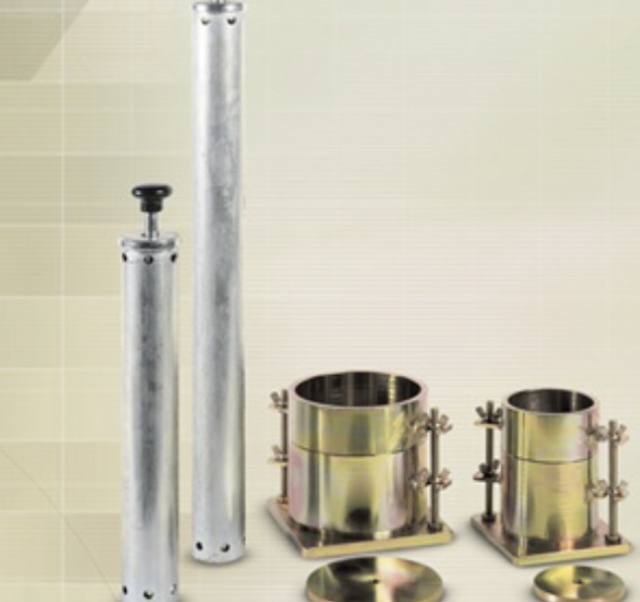
Compatibility with Sample Size and Mold Type
Buy for your real program, not the brochure. Map the compactor to diameters, H/D ratios, and mold styles you actually use.
Checklist
- Diameter & height range3: e.g., Ø 35–70 mm, H/D 2.0 ± 0.1; spacers for variants.
- Mold styles4: split-ring, thin-wall sleeve molds, fixed-base cylinders; quick-change clamps help.
- Lift count: supports 3–7 lifts with prompts; thinner lifts for sensitive clays.
- Accessories: membrane collars, top/bottom caps, strike-off tools, trimming jigs.
- Granular vs fine soils: vibration module or anti-segregation inserts if you run clean sands.
| Fit table | Item | What to verify | Why it matters |
|---|---|---|---|
| Max/min mold ID | Matches your standard diameters | Avoid adapters that add error | |
| Height adjustment | Spacer kit included | Keep H/D in spec | |
| Base alignment | Self-centering seat | Prevents tilt and end friction | |
| Clearance & ergonomics | Room for sleeve roll-down | Faster, fewer nicks |
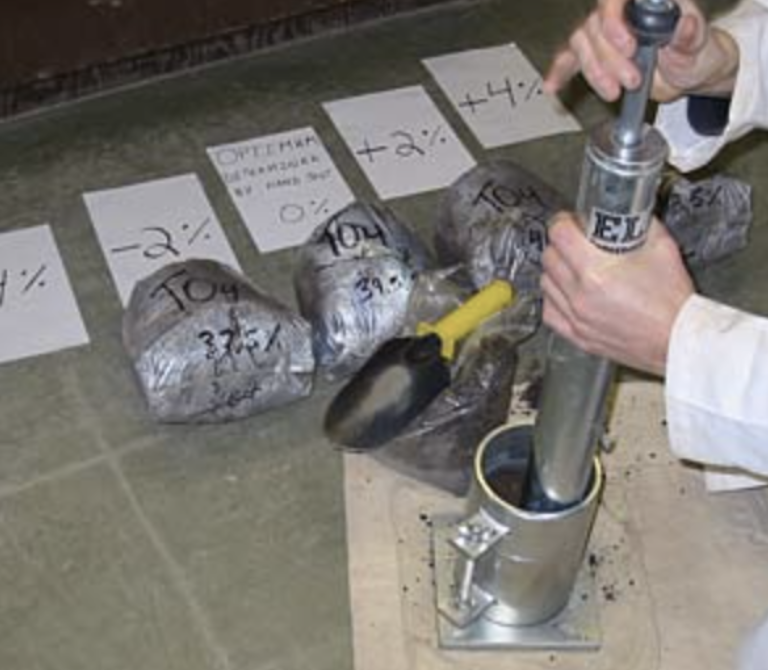
Build Quality, Maintenance, and Durability
Downtime is more expensive than capex. Choose a machine that survives real lab life: dust, moisture, and long days.
- Frame: welded steel or aluminum with low flex; flat, hard-anodized surfaces where soil contacts.
- Guides/bearings: linear guides or bushings with low runout; protected from dust.
- Rammer/anvils/platens: hardened faces; replaceable wear plates.
- Fasteners: captive, tool-less where possible for quick mold swaps.
- Access panels for cleaning and inspection.
- Common spares: seals, bushings, limit switches, load cell if present (field-replaceable).
- Lubrication points labeled; maintenance intervals in hours, not guesswork.
- Safety: shields for moving parts; two-hand or guarded cycle start; emergency stop.
| Durability scorecard (print) | Area | Good looks like |
|---|---|---|
| Frame stiffness | HRC 50) | |
| Dust protection | Bellows/covers over slides | |
| Electrical | IP-rated connectors; strain relief | |
| Documentation | Parts list + maintenance schedule |
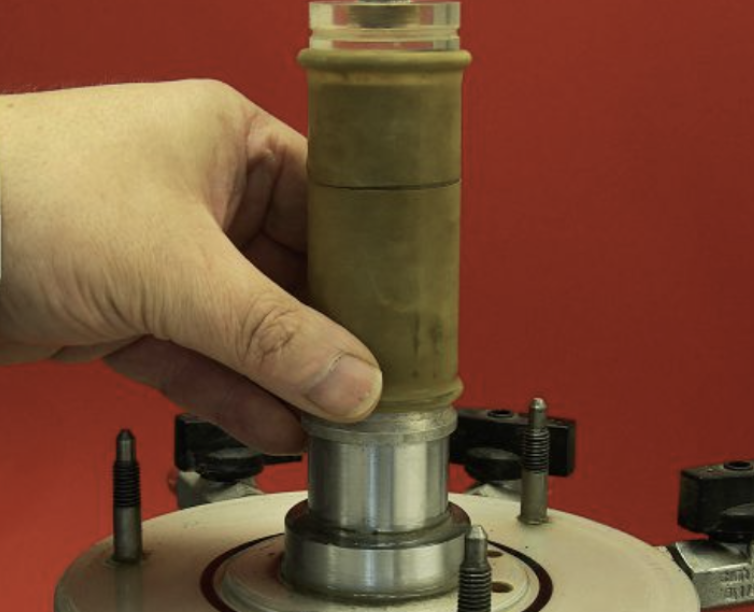
Data Recording and Integration Capabilities
If you can’t prove it, you can’t improve it. Even for specimen prep, light data capture7 pays off.
Must-haves
- Counters & timers: blows per lift, dwell time, session timer.
- Setpoint & actual: pressure/force (if press-type) with timestamp.
- Lift log: prompts to enter lift mass; calculates target vs actual density.
- Export: CSV/JSON via USB or LAN; simple and stable.
Nice-to-haves
- Live API (REST/RS-485) to sync with your LIMS/DAQ.
- User roles and SOP lock-in so settings don’t drift.
- Barcode/QR scan of specimen ID to prevent mislabeling.
- On-screen checklists for moisture verification and geometry checks.
| Data minimal set | Field | Example |
|---|---|---|
| Specimen ID | TX-2025-10-19-04 | |
| Mold Ø / target H/D | 50 mm / 2.0 | |
| Target ρd / w% | 1.85 Mg/m³ / 12% | |
| Lift masses (g) | 120 / 118 / 119 / 121 | |
| Method | Static–cyclic, 4 cycles @ 150 kPa, 10 s dwell | |
| End seating | 50 kPa × 30 s | |
| Operator / timestamp | J. Lin / 2025-10-19 10:42 |
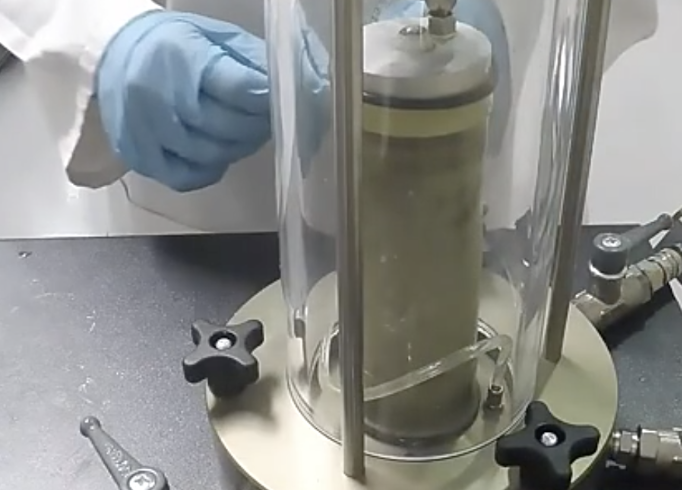
Quick Procurement Matrix (Decide in 10 Minutes)
| Decision axis | Option A | Option B | Choose when… |
|---|---|---|---|
| Method | Drop-hammer | Static–cyclic press | Granular QA vs uniform clays/fines |
| Control | Manual counters | Programmable PLC/HMI | Teaching/basic QA vs research/traceability |
| Size support | Single diameter | Multi-diameter kit | One standard vs mixed programs |
| Data | Local display only | CSV/API export | Paper logs vs LIMS/DAQ integration |
| Service | Vendor-only | Field-serviceable | Remote location vs vendor nearby |
Acceptance Tests Before You Sign Off
- Energy/pressure repeatability: 10 cycles on a dummy load; CV ≤ 3%.
- Lift uniformity: build a specimen; measure lift heights; ±5%.
- End flatness: straightedge + feeler gauge; <0.05 mm gap.
- Throughput: timed 4-lift routine with your mold; verify ergonomics.
- Data export: pull a CSV, check headers and timestamps; open in your LIMS/DAQ.
Conclusion
Buy for method (what your soils need), precision (how the machine controls energy/pressure), compatibility (molds and sizes you actually run), durability (fast service, common spares), and data (prove every lift). Do that, and your compactor will quietly deliver uniform specimens—and cleaner triaxial results—day after day.
-
Explore this link to understand how the Drop-hammer method ensures consistent soil density and its practical applications. ↩
-
Discover the benefits of Vibration-assisted techniques for improving soil density and preventing moisture issues. ↩
-
Understanding diameter and height range is crucial for selecting the right compactor for your specific needs. ↩
-
Exploring various mold styles can help you choose the best option for your compaction projects. ↩
-
Exploring construction cues helps in selecting robust machinery that withstands harsh environments, ultimately saving costs. ↩
-
Understanding serviceability can enhance machine longevity and reduce downtime, ensuring efficient operations. ↩
-
Explore how light data capture can enhance specimen prep efficiency and accuracy. ↩

